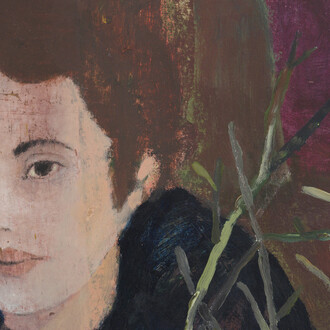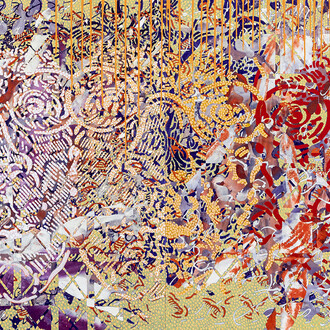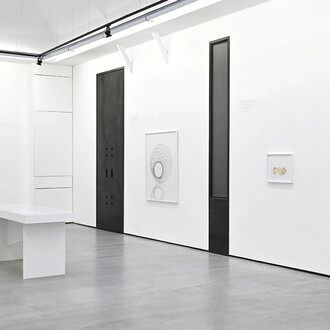One of the twentieth century’s great photographers, André Kertész (Budapest, 1894–New York, 1985) left a prolific body of work spanning more than seventy years (1912–1984), a blend of the poetic and the intimate with its wellspring in his Hungarian culture. The Art of Poise: André Kertész traces this singular career, showcasing compositions that bear the stamp of Europe’s avant-garde art movements, from the artist’s earliest Hungarian photographs to the blossoming of his talent in France, and from his New York years to ultimate international recognition.
Kertész arrived in Paris in October 1925. Moving in avant-garde literary and artistic circles, he photographed his Hungarian friends, artists’ studios, street life and the city’s parks and gardens. In 1933 he embarked on his famous Distortions series of nudes deformed by funhouse mirrors, producing anamorphic images similar in spirit to the work of Pablo Picasso, Jean Arp and Henry Moore.
In addition to this profusion of activity, he explored the possibility of disseminating his work in publications. Between 1933 and the end of his life he had designed and published a total of nineteen books.
In 1936 Kertész and his wife Elizabeth left for New York, where he began with a brief assignment for Keystone, the world’s biggest photographic agency. He struggled, though, to carve out a place for himself in a context whose demands were very different from those of his Paris years.
Inspired by the rediscovery of his Hungarian and French negatives, from 1963 onwards he devoted himself solely to personal projects, and was offered retrospectives by the French National Library in Paris and MoMA in New York. This fresh recognition sparked a flurry of books in which he harked back to the high points of his oeuvre. In his last years, armed with a Polaroid, he returned to his earlier practice of everyday photography.
The exhibition accompanying this volume is being presented at the Château de Tours by the Jeu de Paume and the Médiathèque de l’Architecture et du Patrimoine (MAP), and draws on the collection that André Kertész bequeathed to the nation in 1984. Now housed at the MAP, this archive comprises over 100,000 negatives and contact prints, together with part of his library and prolific correspondence. In prints, original book dummies and reproductions of pages from his books, the exhibition retraces the lifelong interweaving of photography and publishing that shaped Kertész’s visual narrative of interwar Europe and almost fifty years spent in the United States.
















